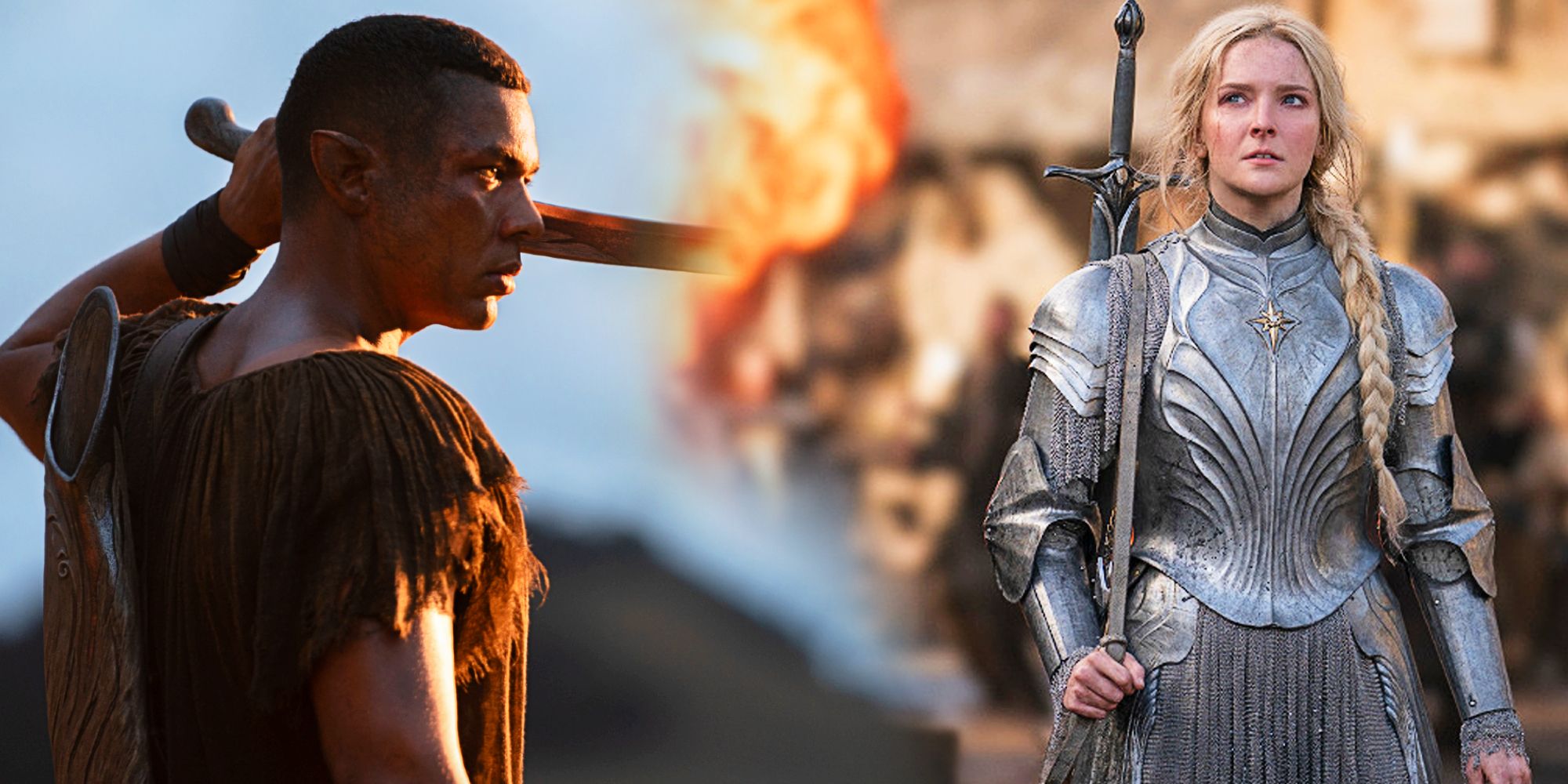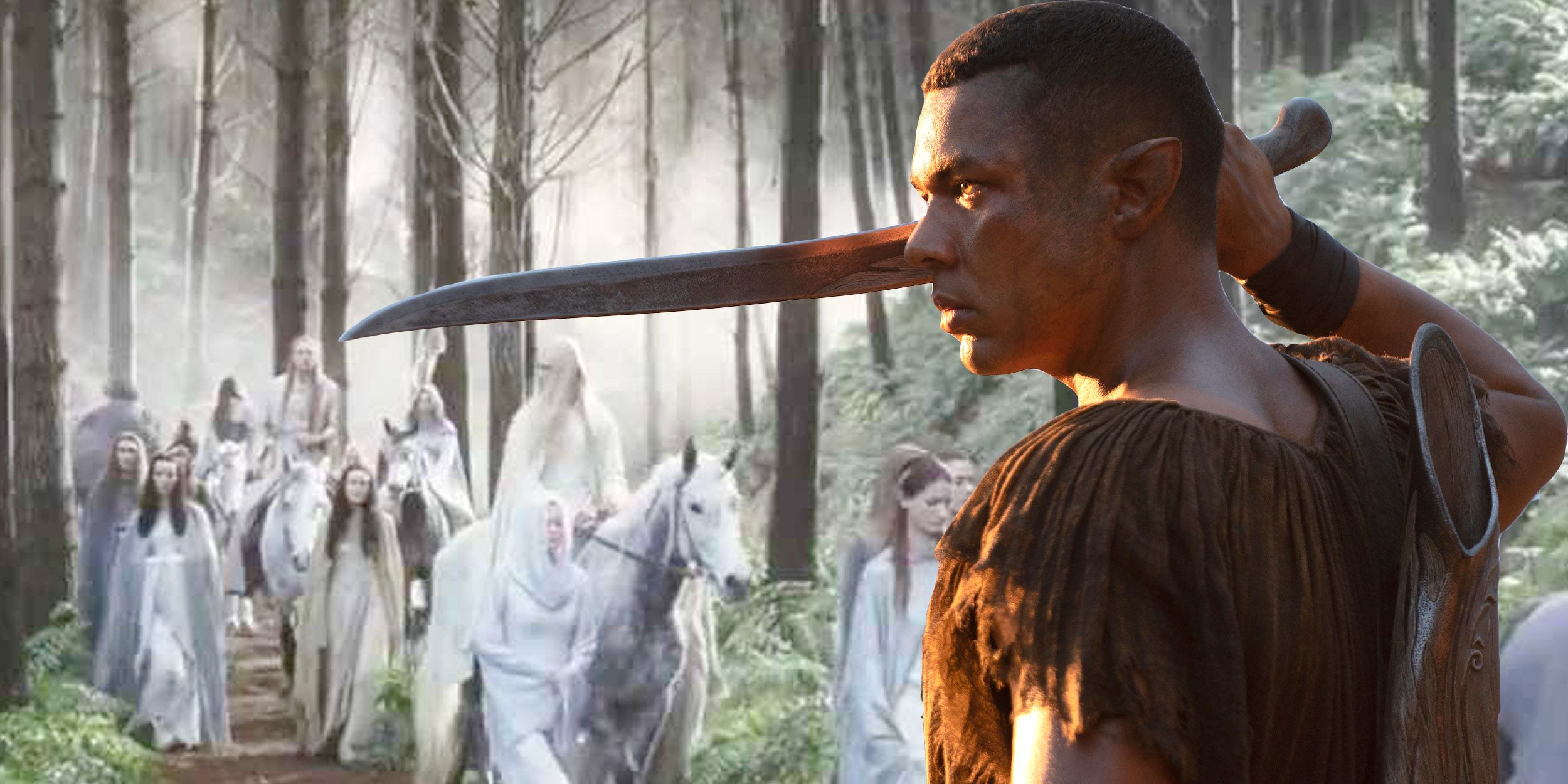Warning! SPOILERS for The Lord of the Rings: The Rings of Power episode 3The Elves in The Lord of the Rings: The Rings of Power have had an increasing number of slow-motion shots throughout the show so far. The third episode of The Rings of Power season 1, titled "Adar," is particularly obvious in its use of slow-motion, especially in the episode's ending when Arondir, who is captured by Orcs, attempts to escape. With The Rings of Power displaying cutting-edge cinematography, breathtaking sets across Middle-earth, and brutal action sequences, there are some instances where less could be more.
The Rings of Power follows the events during the Second Age of Middle-earth, including the Last Alliance between Elves and Men that preludes J.R.R. Tolkien's epic novel, The Lord of the Rings. Although the Amazon Studios production is not directly a prequel to Peter Jackson's The Lord of the Rings and The Hobbit trilogies, it serves as a fantastic expansion of these works, using Tolkien's appendices for The Lord of the Rings as its main inspiration. The Rings of Power is already following the journeys of characters from The Lord of the Rings, particularly Galadriel as she wrestles between her mandate as an Elf to return to Valinor and her desire to ensure that Sauron is defeated and Middle-earth at peace, no matter the cost.
The Rings of Power's use of slow-motion shots when depicting the Elves is starting to become more hindrance than help: mostly because there are far too many of them. This isn't to say that all slow-motion shots are bad. Sometimes they can be used to great emotional effect. One example of this is Haldir's death at Helm's Deep in Peter Jackson's The Lord of the Rings trilogy, where Jackson also regularly uses slow-motion shots. The Rings of Power also uses slow-motion effectively, especially to dwell on the shock and emotion as Médhor is struck down by an Orc and looks fearfully into Arondir's eyes as he slips away. That said, there are too many instances where slow-motion shots of the Elves are becoming tedious and predictable, including the multiple shots of Galadriel riding with Elendil and almost every move Arondir uses when fighting the Orcs and Warg in Adar's conclusion. If every dramatic shot of an Elf in The Rings of Power is in slow-motion, the shots soon lose their magic.
Why Using Slow Motion Only Makes Sense For Elves
Despite the frustrating aspects of The Rings of Power's use of slow motion, there are good reasons why the show only uses slow-motion shots when filming the Elves. There is no slow-motion when Nori helps Meteor Man or when Halbrand scraps with a group of Númenóreans. These characters are important to the story, but the Elves need to stand out in The Rings of Power's narrative. It is important to remember that although the Elves are currently dwelling in Middle-earth, Middle-earth is not their home. They are actually from the Undying Lands of Valinor, making them immortal other-worldly beings compared to those typically found dwelling in Middle-earth.
The Rings of Power is using slow-motion shots to highlight the Elves' acrobatic prowess. Their impressive stature, their superior combat skill, and expert movements are beyond those of other creatures in Middle-earth. The Rings of Power is using this technique to encourage the viewer to notice how the Elves stand out, especially when The Rings of Power boasts overwhelming graphics, sets, and visuals in every scene. This does make sense, but The Lord of the Rings: The Rings of Power still needs to temper its slow-motion ambitions. Only capturing one pivotal move as Arondir fights the Orcs in slow-motion would have been just as effective, if not more so.
The Lord of the Rings: The Rings of Power releases new episodes on Thursdays/Fridays on Prime Video


